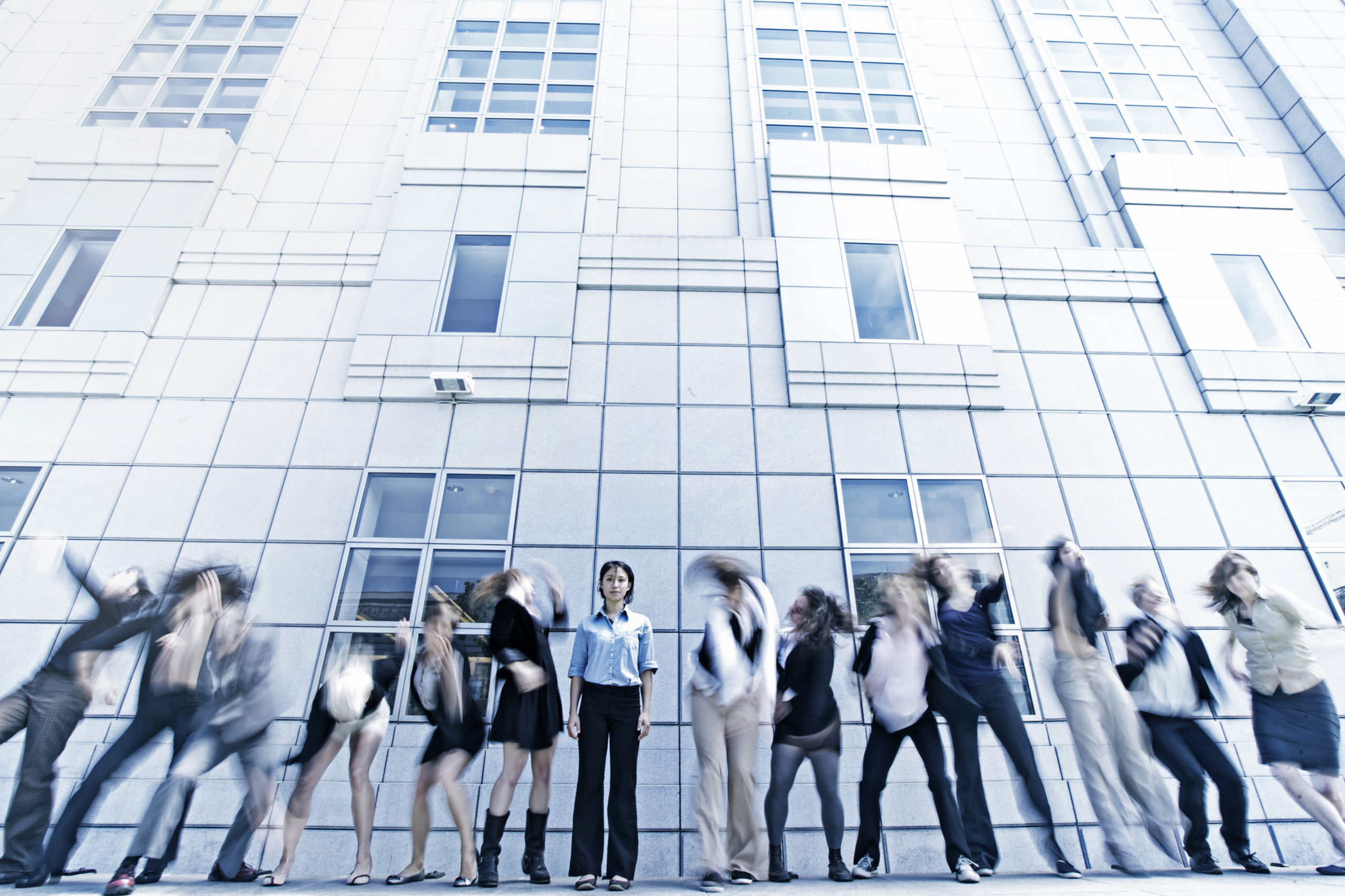
little seismic dance company, photo by Pak Han
My father is a photographer, and growing up, whenever I was minding my own business, doing my homework or vaccinating my stuffed animals, my father would sneak up to me and say, “Si-i-maaaa…” I’d look up to face a cyclopean cyborg, a phantom of the opera, half human, half Leica. And before I could turn away, click! I fell for it every time.
Annoying as this quickly became, I loved growing up surrounded by photographs—of family in Brooklyn and Moldova, of travels to Europe and Asia, and, above all, of an ever-changing New York City. My father’s street photographs of New York, spanning the period between the 1960s and today, chronicle a rapidly shifting landscape, from the visually stunning, filthy chaos of Times Square to its current state of Disneyfication, from seated subway passengers hidden behind crumpled broadsheet newspapers to straphangers staring into cell phones, necks bent at unnatural angles.
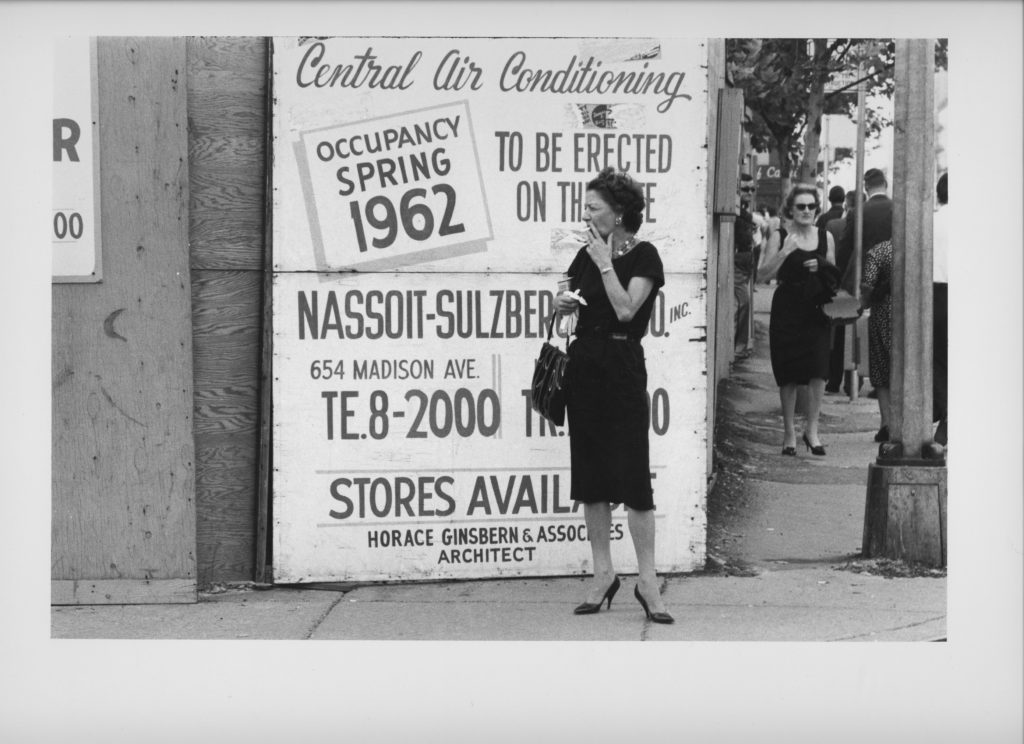
Occupancy Spring 1961
But what most draws me to my father’s street photographs is the way they reflect the movement composition of everyday life. The photographs are candid but rather than seeming to freeze a moment in time, they reveal the viscosity of time itself. Our reality is a shared stretchiness, so even if the woman smoking a cigarette in black pumps is unaware of the woman approaching from around the corner, also in black pumps, they nevertheless existed together in a choreography developing in real time. My dad’s street photographs capture the intercorporeality at the core of our daily lives.
This is probably why I’m so attracted to Pak Han’s dance photography—it looks like street photography, which makes sense considering that Han sees himself as fundamentally a street photographer. Unlike the studio photographs of someone like Lois Greenfield, frozen moments of virtuosity pulled from the context of actual dancing, Han joins the dancer “on the street” to find real-time bodily transactions that tell a story that runs parallel to the dances themselves. Han’s dance photographs have the feeling of being with the world in motion, a process of unconcealment rather than capture. (Yes, I’m being footloose and fancy free with Heidegger here, but since I’m more of an expert on Footloose than Unverborgenheit, that will be my last reference to the philosopher of being and time.)
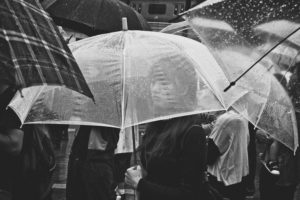
Han was born in Korea and spent his early childhood in Osan, a small town on the outskirts of Seoul. His father was an expressionist painter and Han grew up surrounded by art: “My father was painting every day. We lived in a house with a studio on the first floor. Ever since I was little I doodled and I painted. My father taught me how to draw perfect circles and shapes. It was just an everyday activity. Growing up I thought art was going to be my primary occupation and I was going to paint for the rest of my life.” But things changed when Han’s family immigrated to the United States in 1977 after his father fell in love with the US after a one-year teaching gig in Oregon five years prior: “Compared to Korea, there was so much more freedom here as far as creativity and expressing yourself. But taste in art is very different in Korea and the US. My father was relatively successful in Korea but once we immigrated he wasn’t getting the same kind of success. So our family started struggling. My mother started working full time. My father got into the antique business to make money. But he was a horrible businessman. He would open up an antique shop in a location where they don’t have people walking around looking for antiques. I would help out in the shop and we would go to antique shows together. That’s when I started to think, wait a minute, do I want to be an artist? Throughout my teenage years I was in conflict because I felt like art was what I was meant to do but at the same time I sought a steady paycheck.”

So, before graduating from college, Han found steady work with a steady paycheck outside the art field. But he didn’t give up the life of an artist: “I was looking to become an illustrator. I thought about conceptual design for films or television. The job gave me the stability I didn’t experience growing up but there was no creativity in it. In my spare time, I continued to draw and paint. It wasn’t a dream profession but I did the best I could to have a comfortable life. I started working at age 21 and retired at age 50. I’m 51 now.” Han didn’t want to go into the details of the career he had for 29 years—he has worked hard to keep that life and his artistic endeavors separate.
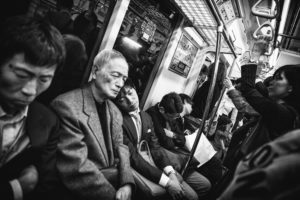
Though his father had given him a Canon AE-1 camera when he turned 18, Han didn’t immediately develop a passion for the one-eyed time machine. Then, in 2007, a photographer friend encouraged him to join him in his practice: “My friend had a couple of manual Leica cameras. I would play with them and he would look at my pictures and go, ‘Wow. You know Han these are actually good.’ That planted a seed in my head. I started to explore photography seriously from that point on, got myself a Canon DSLR, a large camera with a big lens. I started to wander around taking photos in the South Bay. I got hooked. It was a weird feeling, like grabbing a jacket off a rack and it fits perfectly. That was the feeling I got with photography.” For ten years, Han juggled 12-hour shifts at his day job, with 3-4 days a week devoted to photography, two full-time jobs: “I wasn’t getting any rest.”
Despite being digital photographs, Han’s black and white pictures remind me of the photos I grew up with; they have a grainy feel that evokes timelessness and my father’s basement dark room: “I strive for that. I don’t like digital photos to look like digital photos.” When Han had an opportunity to go to Japan in 2008 and 2009—the first time for a Star Wars convention (he’s a huge fan), the second time to see the person he met on the first trip—he took his camera with him. He quickly started getting lost on purpose, just taking photos: “It was one of the most wonderful experiences of my life. It was meditative. Being in that zone, just with my camera, it gave me this amazing euphoric feeling.”
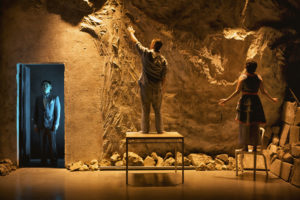
When he came back to California, he showed his photos to renowned Bay Area-based actor, dancer, choreographer, director Erika Chong Shuch. Shuch and Han have known each other all their lives—Han’s father introduced Shuch’s parents to each other in Korea—so they’re “like cousins.” She loved the photos and asked Han if he could take rehearsal photographs of a project she was embarking on in collaboration with Sean San Jose and Dennis Kim called Sunday Will Come at Intersection for the Arts: “I was hesitant because I felt like that wasn’t my thing. But Erika knows how to convince me. She said, ‘Hey, it’s just like street photography! You’re just going to be there and take these candid photos of us during rehearsal.’ I agreed under two conditions: one, complete freedom, no art direction, and two, I’m shooting in black and white.” Pleased with his work, Shuch asked him to take promotional photos, then production photos: “I had no training in production photography. When I showed up, there were people in the seats, the lights kept changing. I just remember running around everywhere with my camera, sweat coming down my forehead and getting into my eyes. I was constantly changing the settings of my camera to adjust to the lighting and the movement. When everything was over Erika and Sean asked how it went. I didn’t really know. It was a blur. I picked maybe a couple dozen shots I thought were good and gave it to them. I didn’t hear anything right away. But after a few days, they told me they loved them.”
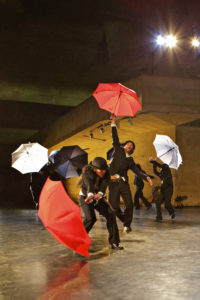
When Han is shooting a live production, he is all over the place: “Before I take a job with any theater, I explain to them that I need to get up close. Instead of capturing images from the point of view of the audience, I want to capture a perspective the audience doesn’t have. And I want it to be cinematic.” Cinematic is a good word for Han’s photography, both street and performance. His photographs tell a story unfolding in time, in that split-second moment after he sees an interesting composition and before he presses the shutter; the photographer recognizes something emergent and a whole universe of change happens in that moment. That’s why it’s not quite right to call photography a technology of capture, and why photographers like Han seem to have an uncanny way of attuning to their environment.
Han has worked long time with Shuch as well as with several Bay Area theater and dance companies such as Nina Haft & Co, Paufve Dance, Anna Halprin, Crowded Fire, Dohee Lee, inkBoat, and Shotgun Players: “I didn’t want to show up and just take photographs, I wanted to have that collaborative relationship. Once they are okay with that, I would work with them.” This agreement doesn’t necessarily guarantee a continuous relationship. Han needs to connect as personalities and artistically: “I have a very special relationship with just a handful of people where we can explore ideas and conjure up imageries and visual concepts.”
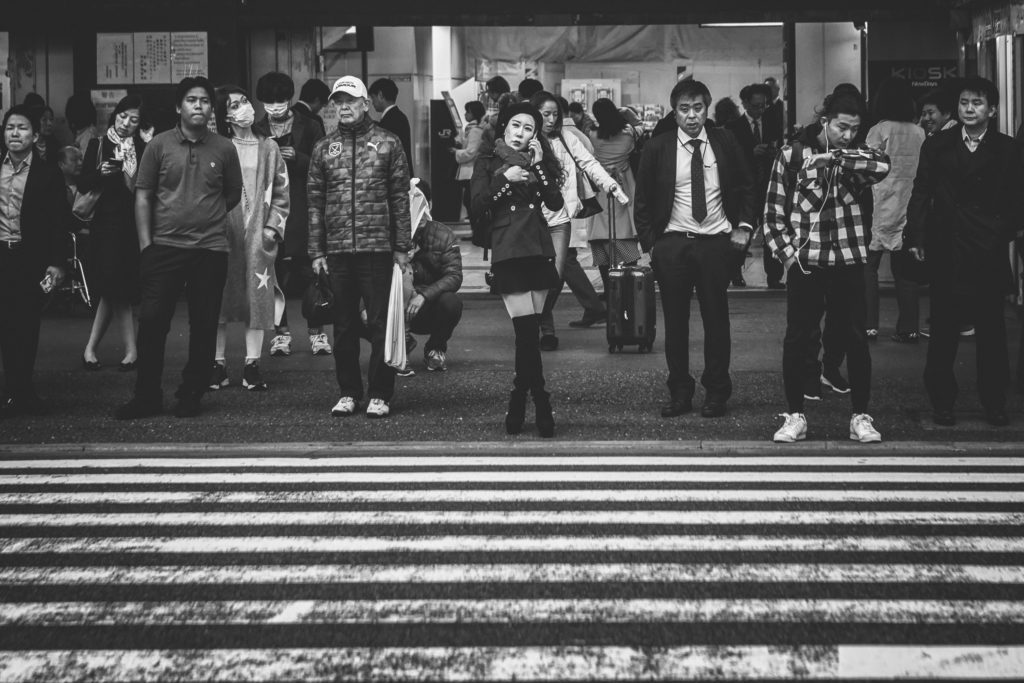
Han’s experiences in Japan cemented his passion for street photography. A street photographer strives to remain unseen. With the help of the camera as protective barrier, a street photographer retains their anonymity. This mode of being in the world suited Han: “With street photography you’re trying to create something beautiful or interesting. But at the same time, I have to be mindful that I’m taking photos of strangers in the street. How do I do it without sacrificing art and without crossing that line of being creepy.” It’s funny that Han used the word “creepy.” When I shared with a writing class that my dad used to take photos of sunbathers on the beach in Seaside Heights, NJ, someone in the class said, “Creepy.” I’d never thought of it as creepy because the photographs always reflected something of compositional interest rather than a lascivious glance toward a woman in a bikini: “I didn’t really think about that either until last year when some of my photos were featured on the website Bored Panda. People started making comments. Some wonderful comments and few, ‘Oh, that’s creepy!’ That’s when I started going, Oh my God, there are people who are going to think that way. It affected the way I shoot now. Before I wasn’t thinking about the woman looking beautiful or sexy when I was taking the photo. I was thinking about composition, lighting, the expression on her face. But after the Bored Panda experience, I went back to Japan and noticed that when I was taking photos I was very aware of that. It kind of put a leash on me a little bit. I don’t know if it’s good or not.”
We are in a moment where we’re being forced to become aware of these things and that’s a net good for our society. As to whether this awareness makes art better or worse, who’s to say? I think those are separate issues. I can’t watch a Woody Allen movie anymore because of who I now understand him to be. His art is ruined for me because I have a new lens on it. I’m pretty sure I’d laugh as hard now at Love and Death as I did before the revelations about his conduct. That’s partly why I won’t watch it again. I feel like my laughter would make me complicit. Some artists are interested in this challenge, others feel like it’s an affront to their creative liberty. Han sees it as a period of figuring things out.
Han’s dance photographs are interesting art objects in and of themselves. They respond to the dance and in so doing become part of the dance: “I am looking for something that has a story of its own in each shot. Rather than seeing a photo and recognizing the image as a dance, I want the viewer to really dwell on the image.” And that’s what both dance writing and dance photography have to offer—an opportunity to dwell on an image, to inhabit the image as a divining rod that locates and reactivates the dance: “One of my objectives is to get people curious about the performance with just one or handful of photos. I want to create a visceral, metaphorical, sublime image that people can look at, wonder what it’s about, and want to know more about the artist and the work.”
Han and I agree that photography is not an art form of capture but rather of creation. Like a piece of dance writing, a dance photograph is not a corollary to the dance but rather an actuality that exists in conversation with the dance, enriching the conversation around it. The dance photograph helps tell the story of the dance. It’s part of the dance’s archive not unlike the bodies that hold the memory of movement in their tissue. Pak Han and his camera join the bodies in motion and in stillness, in the street and in the theater, in the dance.
This article appeared in the March 2020 issue of In Dance.


